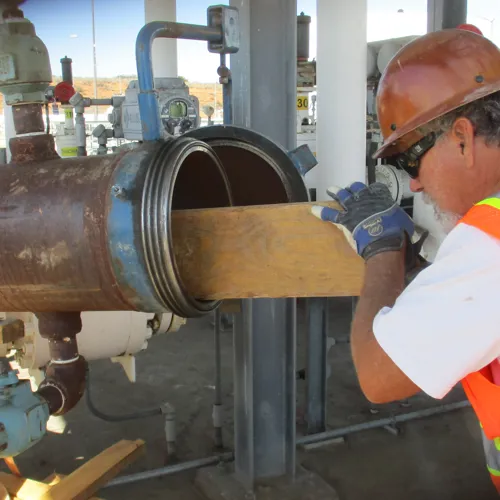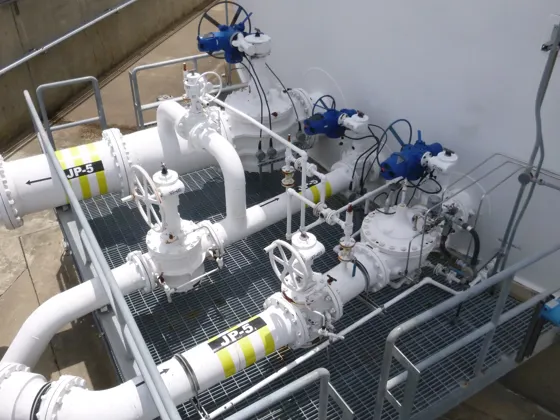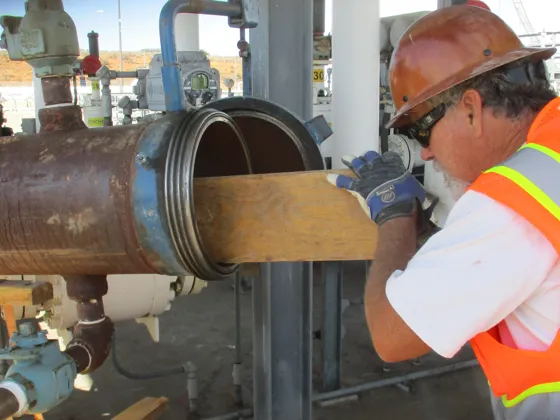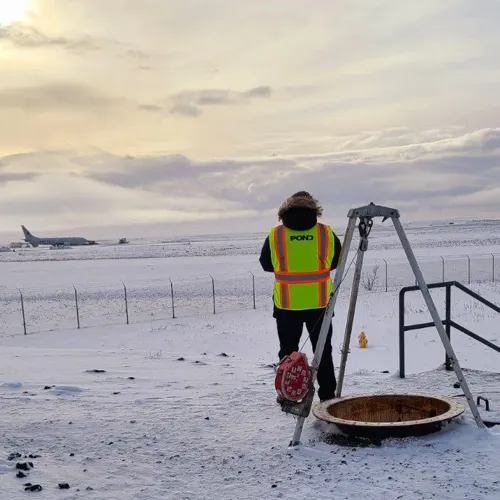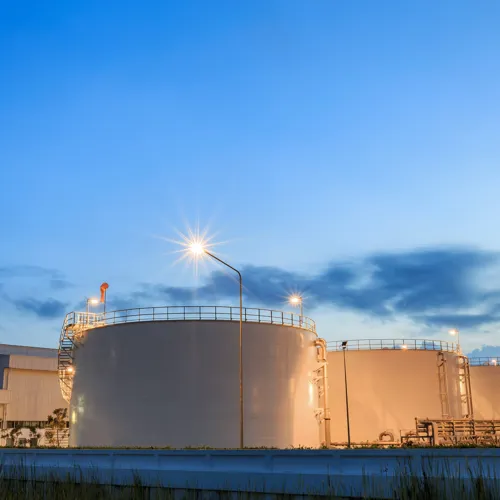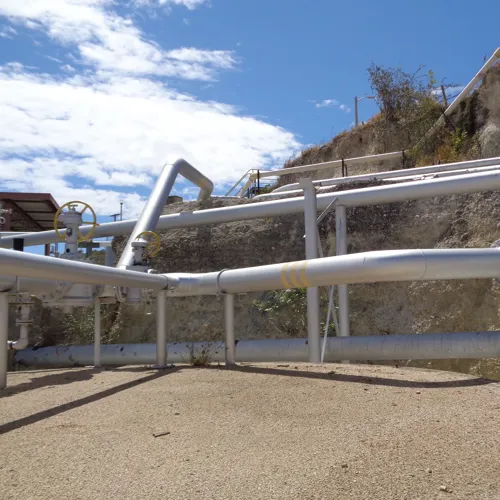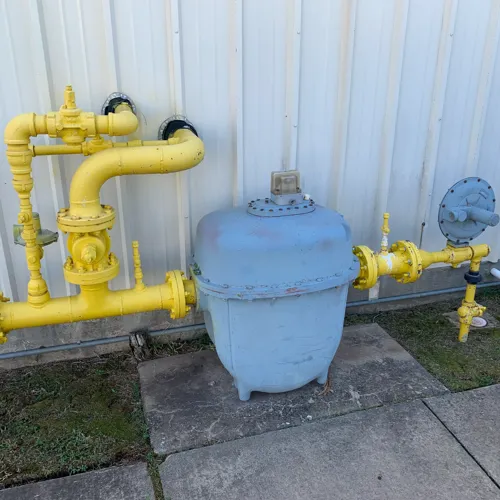Repair Miramar Pipeline Anomalies Phase 1 & 2
Pond, in a joint venture, completed a task order that required the repair of 30 pipeline anomalies at 21 locations along the 17-mile, 8-inch Miramar Pipeline that connects the fuel systems at Naval Base Point Loma to MCAS Miramar. The anomalies were identified in a 2015 Final In-Line-Inspection Report.
Pond completed 100% of the engineering design, inspections, and PCAS for this project. A Pond, API 570 certified professional engineer served as DOR and oversaw the detailed design, production of construction drawings, pipeline inspection, and monitored construction activities in the field. Pond performed all engineering services except for geotechnical and topographical surveys. All designs conformed with UFC 3-460-01 Design: Petroleum Fuel Facilities, UFC 3-201-01 Civil Engineering, UFC 3-220-01 Geotechnical Engineering, and CFR Title 49 Part 195 Transportation of Hazardous Liquids by Pipeline.
The designs also conformed with the Standard Specifications for Public Works Construction, the “Greenbook” (current edition), and the San Diego County Standard Specifications for Public Works Construction, the “Whitebook". Repairs were designed and executed at each anomaly in the SOW, which included the installation of pipe pups, full encirclement sleeves, and coating repairs depending on the type, severity, and location of each anomaly. “Emergent” repairs were scheduled to be completed before other repairs.
Pond civil engineers designed asphalt and concrete demolition and construction plans. The SOW required draining the 17-mile pipeline with trucks, which was costly, time-consuming, and disruptive to local traffic. Pond value-engineered a solution for draining and cleaning the pipeline that utilized cleaning “pigs” to evacuate the line at minimal cost and zero schedule impact. All pigging activities were carefully monitored by Pond and coordinated with FEAD, Kinder Morgan, FLC San Diego, and MCAS Miramar.
Pond environmental engineers completed Water/Habitat Delineations and Surveys, a Storm Water Pollution Prevention Plan (SWPPP), and obtained the numerous permits required by federal, state, and local jurisdictions to execute this task order. The effort included the process of informing and obtaining right-of-way access from private landholders throughout the pipeline. Pond provided the technical acumen and experience in working on a complex project, on a critical national asset, in an environmentally sensitive location in a safely in a heavily populated area.
Pond completed 100% of the engineering design, inspections, and PCAS for this project. A Pond, API 570 certified professional engineer served as DOR and oversaw the detailed design, production of construction drawings, pipeline inspection, and monitored construction activities in the field. Pond performed all engineering services except for geotechnical and topographical surveys. All designs conformed with UFC 3-460-01 Design: Petroleum Fuel Facilities, UFC 3-201-01 Civil Engineering, UFC 3-220-01 Geotechnical Engineering, and CFR Title 49 Part 195 Transportation of Hazardous Liquids by Pipeline.
The designs also conformed with the Standard Specifications for Public Works Construction, the “Greenbook” (current edition), and the San Diego County Standard Specifications for Public Works Construction, the “Whitebook". Repairs were designed and executed at each anomaly in the SOW, which included the installation of pipe pups, full encirclement sleeves, and coating repairs depending on the type, severity, and location of each anomaly. “Emergent” repairs were scheduled to be completed before other repairs.
Pond civil engineers designed asphalt and concrete demolition and construction plans. The SOW required draining the 17-mile pipeline with trucks, which was costly, time-consuming, and disruptive to local traffic. Pond value-engineered a solution for draining and cleaning the pipeline that utilized cleaning “pigs” to evacuate the line at minimal cost and zero schedule impact. All pigging activities were carefully monitored by Pond and coordinated with FEAD, Kinder Morgan, FLC San Diego, and MCAS Miramar.
Pond environmental engineers completed Water/Habitat Delineations and Surveys, a Storm Water Pollution Prevention Plan (SWPPP), and obtained the numerous permits required by federal, state, and local jurisdictions to execute this task order. The effort included the process of informing and obtaining right-of-way access from private landholders throughout the pipeline. Pond provided the technical acumen and experience in working on a complex project, on a critical national asset, in an environmentally sensitive location in a safely in a heavily populated area.
Project Photos
CLIENT
NAVFAC Southwest
LOCATION
Naval Base Point Loma, California
Markets
Similar Projects
